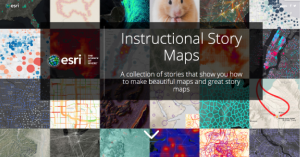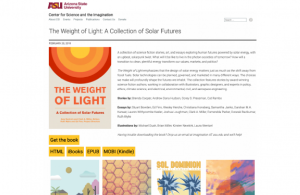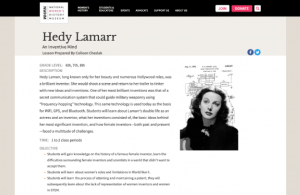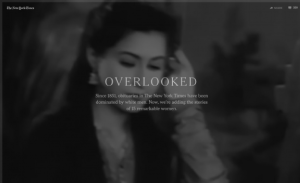General Interest
Back to Top
|
 |
|
Digital Library of the Caribbean
|
Social studies |
|
Scholars, educators, and the generally curious alike may be interested in the Digital Library of the Caribbean (dLOC). Founded in 2004, this unique resource is formed by a collaboration between more than 40 partner institutions "within the Caribbean and circum-Caribbean that provides users with access to Caribbean cultural, historical and research materials held in archives, libraries, and private collections." Visitors to dLOC have a wide variety of materials to explore, including digital exhibits, more than 1,100 historic and contemporary maps, a large collection of historic newspapers and periodicals, documents and archives from Caribbean leaders and governments, and more. dLOC also contains noteworthy special projects featuring rich collections on Panama and the Canal, a multifaceted collection on Cuban history, and a multimedia Vodou Archive. Educators should also check out the teaching guides, where they will find a variety of materials for students in K-12 and beyond, such as digital humanities resources, lesson plans, and syllabi. In keeping with the Caribbean region's multicultural history, the materials in dLOC's collections span a variety of languages, including Spanish, Dutch, and Haitian Creole, as well as numerous items in English. With more than 2.6 million pages of content available, dLOC is a valuable resource for anyone interested in the Caribbean. [JDC] |
|





|
|
 |
|
Instructional Story Maps
|
Social studies |
|
Maps can be beautiful, engaging, and informative ways to learn or educate about a topic, and story maps offer a way to add multimedia and narrative to the mix as well. But for the uninitiated, the prospect of creating a high-quality digital map may be daunting. Fortunately, the team at Esri has created a free resource to help. This collection of story maps is designed to instruct visitors on how to make effective and appealing story maps (a purpose which its creators note is "a bit circular"). Here, readers will find approximately 20 story maps (as of this write-up), each focused on a different cartographic concept or technique. Examples include tutorials on creating visuals such as glowing borders or sunrise effects, an explainer on making heat maps to communicate density, as well as a series of tutorials featuring Esri's Cascade story map template and a series focused on the platform's smart mapping features. The majority of these story maps were created by Esri staff member John Nelson, with some created by Lisa Berry, Julia Holtzclaw, and Clare Trainor. [JDC] |
|





|
|
 |
|
The Weight of Light: A Collection of Solar Futures
|
Science |
|
Science fiction engages its audience's imagination to envision speculative futures that can range from the apocalyptic to the optimistic. It is the latter that is explored in The Weight of Light, an anthology of science fiction stories, essays, and art published in February 2019 by Arizona State University's Center for Science and the Imagination (CSI). This free ebook was "inspired by a simple question: what would a world powered entirely by solar energy look like?" To answer it, CSI hosted a narrative hackathon in 2018 where authors, artists, and experts interacted to "create technically grounded, inspiring visions of a future shaped by a transition to clean, plentiful solar energy." The resulting twelve pieces can be found at the link above. Each of the four categories (Big Urban, Small Urban, Big Rural, and Small Rural) features a science fiction story and an illustration, along with at least one essay commenting on various aspects of the world depicted in the story. Visitors can read the anthology online in HTML format or download it as an ePub, iBook, or Mobi file. The Weight of Light was edited by Joey Eschrich and Clark A. Miller. [JDC] |
|





|
|
 |
|
Poroi: Project on Rhetoric of Inquiry
|
Language Arts |
|
From the University of Iowa's Project on Rhetoric of Inquiry (POROI) comes its namesake, the open-access academic journal Poroi. Launched in 2001 and published semiannually, this peer-reviewed electronic journal publishes interdisciplinary scholarly articles that "emphasize the rhetoric of knowledge production in and across academic disciplines; how knowledge flows between technical, public, and personal spheres of discourse; and how communication media affect argumentation, its dissemination, and reception." Researchers and readers from a variety of scholarly backgrounds, particularly those with an interest in communication-related issues, may be intrigued by the types of work published in Poroi. For example, past article topics have included how CRISPR and the trope of the Book of Nature enable conceptualizing DNA as a text rather than a code (found in Volume 14.2) and how applying a cultural rhetorics approach to the issue of human trafficking could lead toward improved public understanding of and engagement in anti-trafficking efforts (found in Volume 12.2). Currently in its fourteenth volume, Poroi is published semiannually. All articles can be downloaded as PDFs, and those interested may subscribe to receive updates from this journal via email or RSS. [JDC] |
|





|
|
 |
|
N.C. Wyeth Catalogue Raisonne
|
Arts |
|
The Brandywine River Museum of Art in Chadds Ford, PA owns the largest collection of N.C. (Newell Convers) Wyeth's artwork and provides digital access to these works via the Catalogue Raisonne. N. C. Wyeth, A Catalogue Raisonne of Paintings was originally published in print as a two-volume set in 2008 and documented 1,922 paintings that Wyeth created between 1902 and 1945, while the online edition has grown to include over 2,800 works. Most entries in the catalogue consist of an image of the work of art, physical description, provenance, publication and exhibition records, and historical notes. In some cases, related images or photographs are also present. For example, the catalogue entry for Wyeth's painting of Abraham Lincoln from 1938/39 lets us know that the painting was created as a calendar illustration in December 1940 for "America in the Making," published by John Morrell & Company in Ottumwa, IA. The entry also includes a handwritten note written by Wyeth as he prepared his 1939 income taxes, listing expenses for the commission. In addition to documenting N.C. Wyeth, there's also a family tree tracing the many other painters in the Wyeth family, such as N.C. Wyeth's son Andrew Wyeth (1917-2009), daughter Carolyn Wyeth (1909-1994), and grandson Jamie Wyeth (b. 1946). [DS] |
|





|
|



















